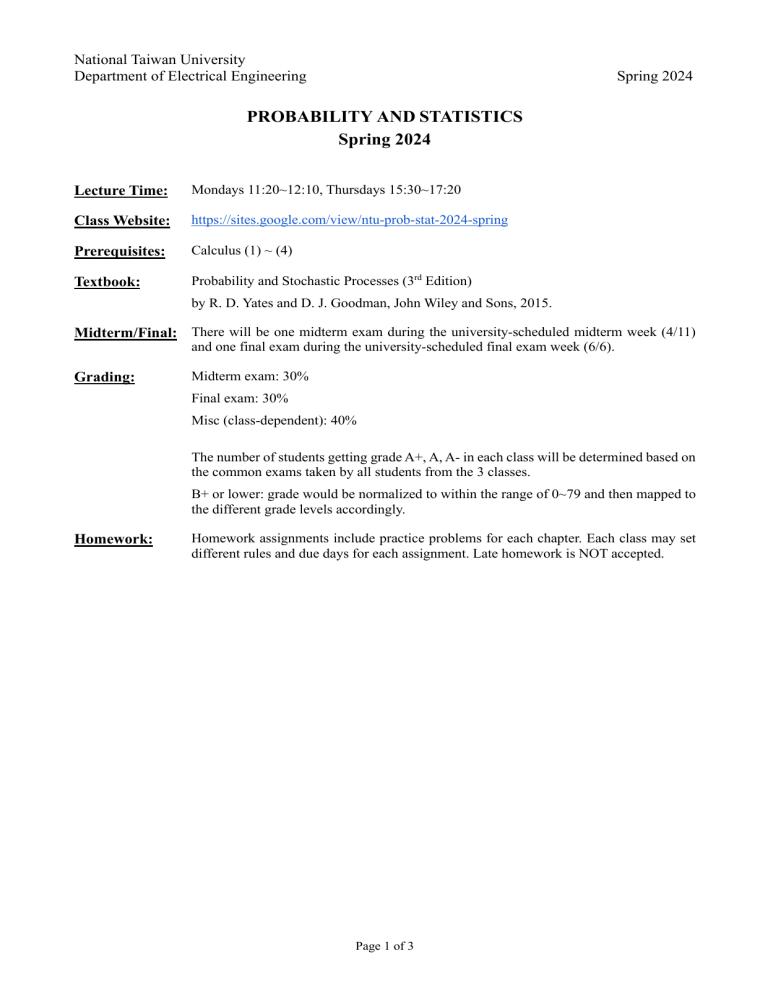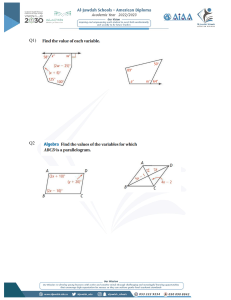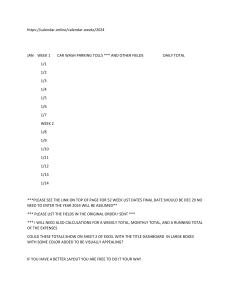
National Taiwan University Department of Electrical Engineering Spring 2024 PROBABILITY AND STATISTICS Spring 2024 Lecture Time: Mondays 11:20~12:10, Thursdays 15:30~17:20 Class Website: https://sites.google.com/view/ntu-prob-stat-2024-spring Prerequisites: Calculus (1) ~ (4) Textbook: Probability and Stochastic Processes (3rd Edition) by R. D. Yates and D. J. Goodman, John Wiley and Sons, 2015. Midterm/Final: There will be one midterm exam during the university-scheduled midterm week (4/11) and one final exam during the university-scheduled final exam week (6/6). Grading: Midterm exam: 30% Final exam: 30% Misc (class-dependent): 40% The number of students getting grade A+, A, A- in each class will be determined based on the common exams taken by all students from the 3 classes. B+ or lower: grade would be normalized to within the range of 0~79 and then mapped to the different grade levels accordingly. Homework: Homework assignments include practice problems for each chapter. Each class may set different rules and due days for each assignment. Late homework is NOT accepted. Page 1 of 3 National Taiwan University Department of Electrical Engineering Spring 2024 Course Outline: Red words indicate corresponding sections in the 3rd edition of Yates & Goodman unless otherwise stated. 1. 1.1. 1.2. 1.3. 1.4. Experiments, Models, and Probabilities Applying Set Theory to Probability (Section 1.1) Probability Space (Section 1.2) Conditional Probability (Section 1.3 & Section 1.4) Independence (Section 1.5) 2. 2.1. 2.2. 2.3. 2.4. 2.5. 2.6. Basics of Random Variables Definitions (Section 3.1) Probability Mass Function (PMF) (Section 3.2) Families of Discrete Random Variables (Section 3.3) Cumulative Distribution Function (CDF) (Section 3.4) Probability Density Function (PDF) (Sections 4.1 ~ 4.3) Families of Continuous Random Variables (Sections 4.5 ~ 4.6) 3. 3.1. 3.2. 3.3. 3.4. 3.5. Random Variables and Expected Value Conditional Probability Mass/Density Function (Section 7.1) Probability Models of Derived Random Variables (Section 3.6 & Section 6.2) Averages (Section 3.5) Variance and Standard Deviation (Section 3.8 & Section 4.4) Expected Value of a Derived Random Variable (Section 3.7) Page 2 of 3 National Taiwan University Department of Electrical Engineering Spring 2024 Course Outline (Continued): 4. 4.1. 4.2. 4.3. 4.4. 4.5. 4.6. Multiple Random Variables Joint Cumulative Distribution Function (Section 5.1) Joint Probability Mass/Density Function (Section 5.2 & Section 5.4) Marginal PMF/PDF (Section 5.3 & Section 5.5) Functions of Two Random Variables (Section 5.7, Section 6.1 & Section 6.4) Conditioning by a Random Variable (Section 7.4) Independent Random Variables (Section 5.6 & Section 5.8) 5. 5.1. 5.2. 5.3. 5.4. 5.5. 5.6. 5.7. Sums of Random Variables Expected Values of Sums (Section 9.1) PDF of the Sum of Two Random Variables (Section 6.5) Moment Generating Functions (Section 9.2) MGF of the Sum of Independent Random Variables (Section 9.3) Random Sums of Independent Random Variables (Section 6.5 @ 2e) Central Limit Theorem (Section 9.4) Law of Large Numbers (Section 10.2 & Section 10.3) 6. 6.1. 6.2. Basic Statistical Inference Binary Hypothesis Testing (Section 11.1) Interval Estimation (Section 7.4 @ 2e) Page 3 of 3






